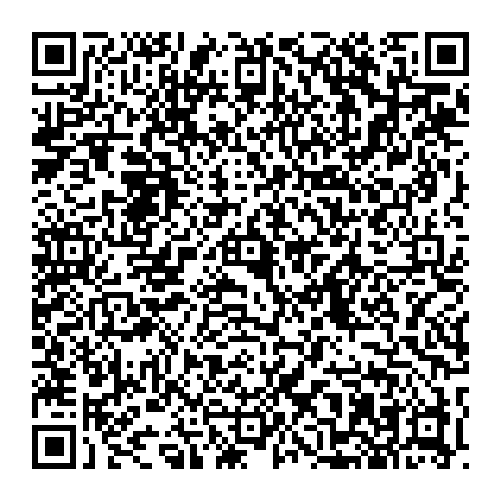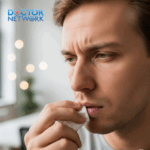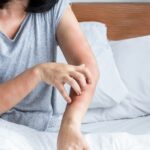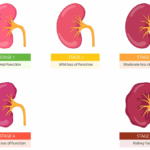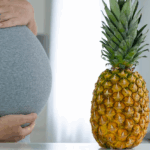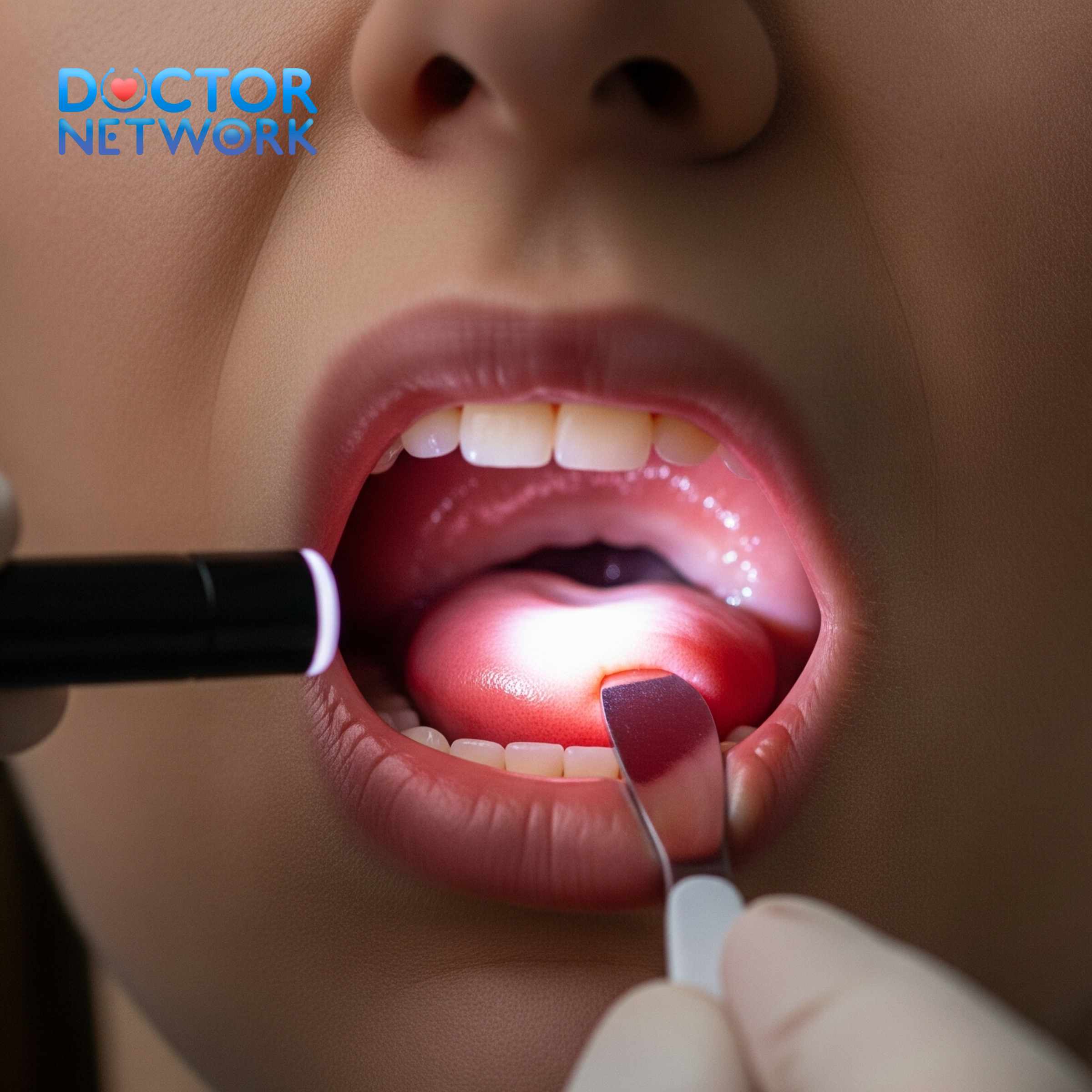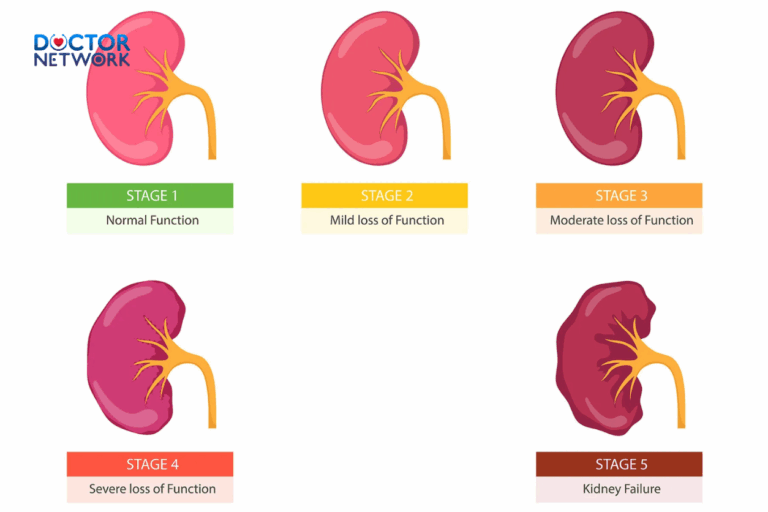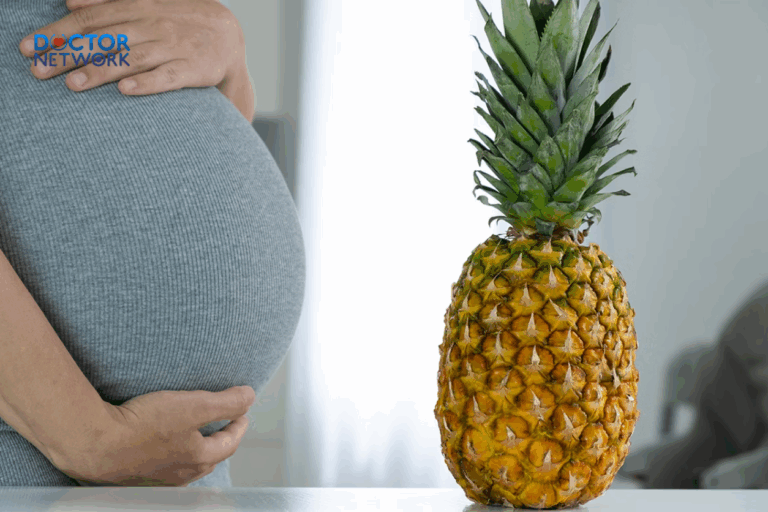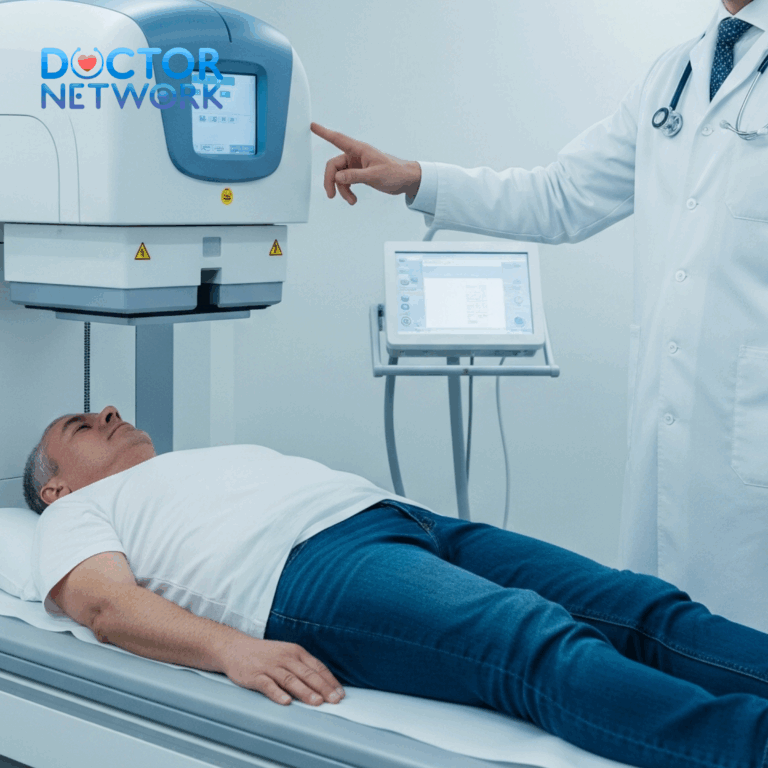Experiencing sharp, throbbing pain along the side of your toenail doesn’t automatically mean you have an ingrown toenail—despite what many people assume when they feel that familiar discomfort. While ingrown toenails represent one of the most common causes of lateral nail pain, numerous other conditions can produce identical symptoms, including onychophosis (callus buildup), paronychia infections, involuted nail growth patterns, and various traumatic injuries. Understanding these alternative causes becomes crucial for effective treatment, as applying ingrown toenail remedies to other conditions often proves ineffective and may worsen the underlying problem.
Side of Toenail Hurts Not Ingrown – This comprehensive guide explores the diverse causes of lateral toenail pain when the nail hasn’t actually penetrated the surrounding skin tissue. We’ll examine pressure-related conditions like onychophosis, infectious processes including paronychia and fungal overgrowth, structural abnormalities such as involuted nails, systemic conditions affecting foot health, and environmental factors contributing to nail groove irritation. Additionally, we’ll provide detailed prevention strategies, evidence-based home treatment options, and clear guidelines for recognizing when professional podiatric intervention becomes necessary. Relief and effective management are achievable once you identify the true underlying cause of your discomfort.
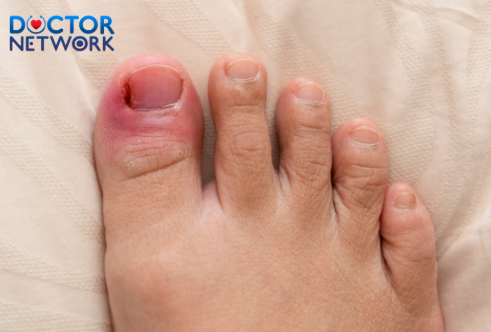
Side of Toenail Hurts But Isn’t Ingrown
Understanding the Pain: Pressure, Not Penetration
The fundamental difference between true ingrown toenail pain and other lateral nail discomfort lies in the mechanism of tissue irritation—genuine ingrown nails occur when the nail plate physically penetrates and embeds into the surrounding skin tissue, creating an open wound. Non-ingrown lateral pain typically results from excessive pressure within the nail groove (sulcus), where accumulated debris, thickened skin, or anatomical variations create compression without actual nail penetration. This pressure-induced discomfort often feels identical to ingrown nail pain, leading to frequent misdiagnosis and inappropriate treatment approaches.
When chronic pressure develops within the nail groove, the body’s natural protective response involves thickening the affected skin tissue through a process called hyperkeratosis. This defensive mechanism creates additional bulk within the already confined space, establishing a cycle where increased tissue thickness generates more pressure, which stimulates further skin thickening. The resulting callus formation, medically termed onychophosis, represents one of the most common non-ingrown causes of lateral toenail pain.
Onychophosis specifically describes callus buildup within the nail groove that creates significant pressure and discomfort despite the absence of nail penetration. This condition develops when repetitive friction, improper footwear, biomechanical abnormalities, or genetic predisposition causes excessive skin cell production along the nail borders. The accumulated callus tissue becomes increasingly dense and painful, often feeling as though the nail is “trying to ingrow” even though no actual penetration occurs. Patients frequently describe a constant aching sensation, sharp pain with pressure application, and difficulty wearing closed-toe shoes comfortably.
Beyond Onychophosis: Other Common Causes
Trauma and Injury
Direct trauma represents a significant cause of lateral toenail pain, manifesting through various mechanisms including acute impact injuries, repetitive microtrauma, and cumulative stress from ill-fitting footwear. Acute traumatic events such as stubbing the toe against furniture, dropping heavy objects onto the foot, or sustaining kicks during athletic activities can damage the nail matrix, nail plate, or surrounding soft tissues without creating an ingrown condition. These injuries often produce immediate pain, swelling, and potential bleeding beneath the nail plate (subungual hematoma).
Repetitive microtrauma proves equally problematic, developing gradually through chronic rubbing from tight shoes, repetitive kicking motions in sports, or prolonged walking in poorly fitted footwear. This cumulative damage creates inflammation within the nail bed and surrounding tissues, leading to persistent discomfort that mimics ingrown nail symptoms. The severity varies considerably—minor impacts may cause temporary tenderness and slight swelling, while significant trauma can alter nail growth patterns permanently, create structural deformities, or predispose to future ingrown nail development.
Monitoring traumatic injuries becomes essential for preventing complications and ensuring proper healing. Warning signs requiring attention include persistent bruising that doesn’t resolve within two weeks, nail splitting or cracking, progressive swelling around the affected area, increasing tenderness rather than gradual improvement, and any open wounds or bleeding that fails to stop with basic first aid measures.
Prevention strategies for trauma-related toenail pain include wearing properly fitted, closed-toe protective footwear during high-risk activities, maintaining awareness of foot placement during daily movements, avoiding cutting nails excessively short (which exposes sensitive nail bed tissue), and utilizing protective padding or toe guards during sports participation. Custom orthotics may benefit individuals with biomechanical abnormalities that predispose to repetitive trauma.
Infections Around the Nail
Paronychia represents an inflammatory or infectious condition affecting the skin folds (paronychium) surrounding the nail plate, creating symptoms that closely resemble ingrown toenail complications. This condition develops when bacteria or fungi gain entry through microscopic breaks in the skin barrier, such as hangnails, aggressive cuticle manipulation, paper cuts, or minor traumatic injuries. The resulting infection causes significant redness, swelling, warmth, and throbbing pain along the nail borders, often accompanied by purulent discharge or visible pus accumulation.
Acute paronychia typically presents with rapid onset of symptoms, intense pain, and obvious signs of infection including erythema, edema, and potential abscess formation. Chronic paronychia develops more gradually, often related to repeated moisture exposure, chemical irritants, or underlying skin conditions that compromise the nail fold’s protective barrier. Both forms can affect the lateral nail folds specifically, creating pain that patients frequently mistake for ingrown nail complications.
Fungal infections (onychomycosis) contribute to lateral nail pain through several mechanisms, primarily involving nail plate thickening, structural distortion, and secondary pressure effects. As fungal organisms proliferate within the nail structure, they cause progressive thickening, yellowing or brownish discoloration, and crumbling of the nail edges. The increasingly thick and distorted nail can exert pressure against the lateral nail folds, creating discomfort similar to ingrown nail pain without actual tissue penetration.
These mycotic infections thrive in warm, moist environments commonly found within closed-toe shoes, particularly among individuals with excessive foot perspiration, poor ventilation, or compromised immune systems. The infected nail may also become more brittle and prone to sharp edges that irritate surrounding tissues, contributing to the overall discomfort.
Bacterial infections can also affect the nail area independently or in conjunction with other conditions, causing localized inflammation, swelling, redness, and potential discharge. These infections often overlap with paronychia presentations and may develop secondary to trauma, ingrown nail complications, or compromised skin barrier function.
Nail Shape and Growth Issues
Involuted nails (also called curved or pincer nails) create lateral pain through excessive curvature of the nail plate edges, which curve downward into the nail groove without actually penetrating the skin tissue. This anatomical variation can be congenital, developing due to genetic factors that influence nail growth patterns, or acquired through improper nail trimming techniques, trauma, or underlying medical conditions affecting nail matrix function. The curved edges create constant pressure against the lateral nail folds, producing chronic discomfort that intensifies with tight footwear or prolonged standing.
The degree of curvature varies significantly among affected individuals, ranging from mild lateral curving that causes occasional discomfort to severe pincer-nail deformity that creates debilitating daily pain. Unlike true ingrown nails, involuted nails typically don’t break the skin surface, but the chronic pressure can lead to callus formation, skin thickening, and secondary inflammatory changes within the nail groove.
Management of involuted nails requires careful attention to proper trimming techniques, including cutting the nails straight across rather than following the curved nail edge, avoiding excessively short trimming that removes protective nail length, and gently filing any sharp edges that might catch on hosiery or create pressure points. Professional podiatric care often proves beneficial for individuals with severe curvature, as specialized techniques including corrective devices, nail braces, or minor surgical procedures can help reshape the nail growth pattern and reduce lateral pressure.
Improper nail trimming contributes significantly to lateral nail pain through multiple mechanisms, including creation of sharp edges that irritate surrounding tissues, removal of excessive nail length that exposes sensitive nail bed areas, and curved cutting patterns that encourage inward nail growth. Cutting the nails too short eliminates the protective barrier between the nail bed and external environment, increasing susceptibility to trauma, infection, and inflammatory responses that manifest as lateral pain.
Other Contributing Conditions
Skin and Soft Tissue Conditions
Skin buildup beside the nail, expanding on our earlier discussion of onychophosis, requires detailed management approaches to effectively address the underlying hyperkeratotic tissue accumulation. The therapeutic approach involves both immediate symptom relief and long-term prevention of recurrent callus formation. Regular exfoliation using gentle abrasive techniques helps remove accumulated dead skin cells before they form problematic calluses, while consistent moisturizing maintains skin elasticity and reduces the likelihood of excessive tissue thickening.
Detailed management protocols include daily foot soaking in warm water for 10-15 minutes to soften hardened tissues, followed by careful use of pumice stones or specialized foot files to gently remove thickened skin from the nail groove area. This process requires patience and consistency, as aggressive removal attempts can damage healthy tissue and worsen the underlying condition. Professional debridement by a qualified podiatrist becomes necessary for persistent or worsening cases, particularly when home management fails to provide adequate relief or when the callus buildup interferes significantly with daily activities.
Moisturizing strategies prove crucial for maintaining optimal skin condition around the nail area. Daily application of thick, emollient-rich creams or petroleum-based products helps maintain skin elasticity and prevents the excessive drying that contributes to hyperkeratotic tissue formation. Urea-containing moisturizers offer particular benefits due to their keratolytic properties, which help soften and thin accumulated callus tissue while providing lasting hydration.
Corns in the sulcus represent localized areas of hardened skin tissue that develop within the nail groove due to constant friction and pressure, typically from ill-fitting footwear or biomechanical abnormalities that create abnormal pressure distribution. These painful, concentrated areas of hyperkeratotic tissue differ from more diffuse callus formation and often require targeted treatment approaches for effective resolution.
The management of sulcular corns involves both pressure reduction and tissue softening techniques. Specialized softening creams containing salicylic acid or other keratolytic agents help break down the hardened tissue, while protective padding and cushioning devices redistribute pressure away from the affected area. Professional corn removal provides immediate relief for particularly painful or persistent cases, though addressing the underlying mechanical factors becomes essential for preventing recurrence.
Psoriasis and eczema affecting the nail area create complex symptom patterns that can closely mimic other causes of lateral nail pain. Psoriatic nail involvement commonly produces nail plate thickening, pitting, onycholysis (nail separation), and salmon-colored discoloration, while affecting the surrounding skin through scaling, inflammation, and increased fragility. Eczematous conditions create similar tissue changes, including skin brittleness, flaking, cracking, swelling, intense itching, and tenderness that can be mistaken for infectious or traumatic causes.
The management of these dermatological conditions requires professional healthcare coordination, typically involving dermatologists and podiatrists working together to address both the underlying skin condition and its effects on nail health. Treatment options may include topical corticosteroids, immunomodulating agents, phototherapy, or systemic medications depending on the severity and extent of involvement.
| Condition | Primary Symptoms | Key Distinguishing Features | Treatment Approach |
|---|---|---|---|
| Onychophosis | Pressure pain, callus buildup | Thick, hardened tissue in nail groove | Debridement, moisturizing, pressure reduction |
| Sulcular Corn | Localized sharp pain | Small, concentrated hard spot | Corn removal, padding, footwear modification |
| Psoriatic Nail Disease | Pain, thickening, pitting | Salmon discoloration, nail separation | Anti-inflammatory treatments, immunomodulation |
| Eczematous Changes | Itching, tenderness, scaling | Skin fragility, widespread inflammation | Barrier protection, topical therapies |
Systemic and Structural Issues
Arthritis and gout contribute to lateral toenail pain through inflammatory processes that affect the joints and surrounding tissues of the toe. Arthritic conditions create joint inflammation, swelling, and structural changes that can alter normal biomechanics and create abnormal pressure distribution around the nail area. This inflammatory process manifests as aching pain, stiffness, and discomfort that may be mistaken for nail-specific problems, particularly when the inflammation affects the distal interphalangeal joint closest to the nail.
Gout specifically involves the deposition of uric acid crystals within joint spaces and surrounding tissues, creating intense inflammatory responses characterized by severe pain, swelling, redness, and extreme tenderness. When gout affects the great toe (podagra), the resulting inflammation and swelling can create pressure against the nail area, producing pain that radiates along the lateral nail borders and mimics other nail-related conditions.
The management of arthritis-related nail pain typically involves anti-inflammatory medications (NSAIDs), physical therapy to maintain joint mobility and function, and custom orthotic devices that redistribute pressure and provide cushioning support. Gout management requires specific attention to uric acid levels through dietary modifications, medications that reduce uric acid production or enhance excretion, and lifestyle changes that minimize triggering factors.
Neuroma represents benign nerve tissue growth that can create various sensory disturbances including pain, numbness, tingling, and burning sensations affecting the toes and surrounding areas. Morton’s neuroma, the most common form affecting the forefoot, typically develops between the third and fourth toes but can create referred pain patterns that affect adjacent areas including the nail regions of nearby digits.
Foot deformities including bunions (hallux valgus), hammertoes, and flat feet contribute to lateral nail pain through altered biomechanics and abnormal pressure distribution during weight-bearing activities. Bunion deformities shift the great toe position laterally, potentially creating crowding and pressure against adjacent toes and their nail areas. Hammertoe deformities cause the affected digits to assume abnormal positions that may increase pressure against shoe surfaces or adjacent toes, while flat foot conditions alter the overall foot mechanics and weight distribution patterns.
Chemical Irritants and Allergic Reactions
Chemical exposure from nail care products represents an underrecognized cause of lateral nail pain, particularly among individuals who frequently use nail polish, acetone-based removers, artificial nail products, or other cosmetic chemicals. These substances can cause direct chemical irritation through tissue damage and oil stripping, leading to increased brittleness, inflammation, and susceptibility to secondary problems including bacterial or fungal infections.
Allergic reactions to nail care products manifest through immune-mediated inflammatory responses characterized by redness, swelling, itching, burning sensations, and localized tissue reaction around the nail area. Common allergens include formaldehyde, toluene, dibutyl phthalate, acrylates used in gel nail systems, and various preservatives or fragrances added to cosmetic products.
Detailed prevention strategies for chemical-related nail problems include transitioning to hypoallergenic nail care products that avoid common sensitizing chemicals, taking regular breaks from nail polish application to allow tissue recovery, wearing protective gloves during cleaning or chemical exposure, and carefully reading product ingredient lists to identify potential allergens. When reactions occur, immediate discontinuation of suspected products, thorough washing of affected areas, and patch testing of new products before full application help prevent recurring problems.
Treatment approaches for chemical irritation or allergic reactions involve avoiding the causative agent, supporting tissue healing through gentle cleansing and moisturizing, and consulting dermatological specialists for persistent or severe reactions that don’t respond to conservative management. Topical corticosteroids may provide temporary relief for inflammatory symptoms, while antihistamines can help control allergic response intensity.
Finding Relief and Preventing Recurrence: Home Care and Prevention
Home Remedies for Mild Pain
Warm water soaking provides multiple therapeutic benefits for lateral toenail pain, including reduction of swelling through improved circulation, gentle cleansing that removes debris and bacteria, softening of hardened tissues to facilitate natural exfoliation, and general soothing effects that diminish pain perception. Adding Epsom salt (magnesium sulfate) or regular table salt enhances these benefits through osmotic effects that help draw out inflammatory fluids and provide additional antimicrobial activity.
The optimal soaking protocol involves immersing the affected foot in comfortably warm (not hot) water for 15-20 minutes, two to three times daily during acute symptom periods. The water temperature should feel pleasant to the touch, as excessive heat can worsen inflammation and potentially damage already sensitive tissues. After soaking, thorough drying of all foot surfaces becomes essential to prevent secondary fungal growth or bacterial colonization.
Maintaining cleanliness and dryness represents a fundamental aspect of home care that prevents infectious complications and promotes natural healing processes. This involves daily washing with mild soap and water, complete drying of all foot surfaces including between toes, and ensuring that footwear and hosiery remain clean and dry throughout the day. Moisture-wicking socks and breathable footwear materials help maintain optimal environmental conditions around the affected nail area.
Over-the-counter treatment options provide accessible relief for many individuals experiencing mild to moderate lateral nail pain. Pain relievers including ibuprofen and acetaminophen offer both analgesic and anti-inflammatory effects, with ibuprofen providing particularly beneficial anti-inflammatory activity for conditions involving tissue swelling or irritation. Topical preparations including antifungal creams, antibacterial ointments, and numbing agents containing lidocaine can provide targeted relief when applied directly to affected areas.
Cold compress application helps reduce acute inflammation and provides temporary numbing effects that diminish pain perception. This technique proves particularly beneficial immediately following traumatic injuries or during acute inflammatory flares. Application should be limited to 15-20 minute intervals with protective barriers (such as thin towels) between the cold source and skin to prevent tissue damage from excessive cold exposure.
Alternative remedies including diluted tea tree oil offer potential antimicrobial and anti-inflammatory benefits, though these should be used cautiously due to potential skin sensitization in susceptible individuals. Tea tree oil must be properly diluted (typically 1:10 ratio with carrier oil) before application, and discontinued immediately if any signs of irritation develop.
Prevention Strategies
Footwear selection represents the most critical factor in preventing lateral toenail pain across multiple causative conditions. Proper shoe fitting requires professional measurement of both foot length and width, preferably conducted during afternoon hours when feet reach their maximum size due to normal daily swelling. The toe box should provide adequate width and height to accommodate natural toe positioning without crowding or compression, while the overall shoe length should allow approximately half-inch clearance between the longest toe and shoe front.
Advanced footwear considerations include avoiding high heels exceeding 1.5 inches in height, which create abnormal pressure distribution and force toes into unnatural positions, checking for internal seams or rough areas that might create pressure points, ensuring adequate arch support that maintains proper foot alignment, and selecting shoes appropriate for intended activities rather than relying on single-purpose footwear for all occasions. Custom orthotic devices may benefit individuals with specific biomechanical abnormalities or structural foot problems.
Sock selection significantly impacts nail health through moisture management and pressure distribution. Properly fitted socks should not be excessively loose (causing bunching and pressure points) or tight (restricting circulation and creating compression). Moisture-wicking synthetic materials or merino wool blends help maintain dry conditions around the nail area, while padded socks provide additional cushioning for individuals prone to pressure-related problems.
| Prevention Category | Specific Strategies | Target Conditions |
|---|---|---|
| Footwear Management | Proper fitting, wide toe box, arch support | Pressure-related pain, trauma, deformities |
| Nail Care Routine | Straight trimming, appropriate length, clean tools | Ingrown prevention, infection control |
| Moisture Control | Wicking socks, thorough drying, antifungal powder | Fungal infections, bacterial overgrowth |
| Chemical Avoidance | Hypoallergenic products, protective barriers | Contact dermatitis, chemical irritation |
Comprehensive nail care routines encompass multiple aspects of foot hygiene and maintenance that collectively reduce the risk of various nail-related problems. Daily foot washing should include careful attention to nail areas and toe spaces, followed by complete drying and optional application of antifungal powder in high-risk individuals. Regular moisturizing of nail beds and cuticles maintains tissue health while avoiding over-moisturizing between toes where excess moisture promotes fungal growth.
Proper nail trimming techniques require cutting straight across the nail rather than following curved edges, maintaining appropriate nail length that protects underlying tissues without creating excessive overhang, using clean and sharp nail clippers to prevent tissue damage, and timing nail cutting after bathing when thick nails are softer and easier to manage. Filing sharp edges smooth prevents catching on hosiery and reduces pressure point formation.
Trauma prevention strategies include maintaining awareness of foot placement during daily activities, wearing closed-toe protective footwear in high-risk environments, watching for obstacles and uneven surfaces that might cause stubbing injuries, replacing worn footwear that no longer provides adequate protection, and utilizing protective padding or toe guards during athletic activities or occupational exposures.
Chemical and allergy prevention involves selecting hypoallergenic nail care products that avoid common sensitizing agents, taking regular breaks from nail polish application to allow tissue recovery, using protective gloves during cleaning activities or chemical exposures, and patch testing new products before full application to identify potential allergic reactions before they cause significant problems.
When to Seek Professional Help
Severity indicators that warrant professional podiatric evaluation include persistent pain that fails to improve with appropriate home care measures within one week, progressive worsening of symptoms despite conservative treatment, pain intensity that interferes with daily activities such as walking or wearing normal footwear, and development of additional concerning symptoms that suggest more serious underlying conditions.
Infection warning signs require prompt professional attention due to the risk of serious complications including deeper tissue involvement, bone infection (osteomyelitis), or systemic spread of infectious organisms. These signs include significant redness extending beyond the immediate nail area, progressive swelling that worsens rather than improves, warmth and tenderness suggesting active inflammatory processes, purulent discharge or visible pus accumulation, any bleeding that doesn’t stop with basic first aid measures, and systemic symptoms including fever or general malaise.
Structural nail changes that indicate professional evaluation needs include progressive thickening of the nail plate that interferes with normal trimming, significant discoloration including yellowing, darkening, or unusual color patterns, uneven growth patterns or structural deformities, nail splitting or cracking that doesn’t improve with conservative care, and loosening or separation of the nail from the underlying nail bed.
Neurological symptoms including numbness, tingling, or weakness in the affected toe suggest potential nerve involvement that requires professional assessment to prevent permanent complications. These symptoms may indicate conditions ranging from localized nerve irritation to more serious systemic problems affecting peripheral nerve function.
High-risk patient populations require particular attention to nail-related problems due to increased susceptibility to complications and delayed healing responses. Individuals with diabetes face elevated risks of infection, delayed wound healing, and potential progression to serious complications including ulceration and bone infection due to compromised circulation and immune function. Similarly, patients with peripheral vascular disease, immune system compromise, or other conditions affecting healing responses should seek professional evaluation promptly rather than attempting extended periods of home treatment.
Podiatric specialists represent the most appropriate healthcare providers for comprehensive evaluation and treatment of nail-related problems, possessing specialized training in foot and ankle conditions, access to specialized diagnostic tools and treatment techniques, and experience managing both simple and complex nail disorders. These professionals can provide accurate diagnosis, appropriate treatment recommendations, and long-term management strategies tailored to individual patient needs and circumstances.
The importance of professional care becomes particularly evident when conservative home treatments fail to provide adequate relief or when symptoms suggest more serious underlying conditions requiring specialized intervention. Early professional evaluation often prevents progression to more serious complications and typically results in more effective treatment outcomes compared to delayed care seeking after problems have become well-established or complicated.
Here are 5 common questions many people have about the topic “side of toenail hurts but not ingrown,” along with expert answers based on current medical understanding:
1. Why does the side of my toenail hurt if it’s not ingrown?
Pain on the side of a toenail without signs of ingrowth can be caused by several conditions such as fungal infections, trauma to the nail bed, paronychia (infection around the nail), or pressure from poorly fitting shoes. Even if the nail looks normal, inflammation or minor injuries beneath or around the nail can cause discomfort.
2. What are the symptoms of a fungal toenail infection?
Fungal infections often cause the toenail to thicken, discolor (yellow, white, or brown), become brittle or crumbly, and sometimes emit a bad odor. This infection can cause pressure and pain on the side of the nail due to changes in the nail structure.
3. How can trauma cause pain on the side of the toenail?
Trauma such as stubbing the toe, dropping something heavy on it, or repeated rubbing from tight shoes can injure the nail bed or cause subungual hematomas (blood pooling under the nail). This leads to pain, discoloration, and sometimes partial nail separation, even if the nail itself is not ingrown.
4. What is paronychia and how does it cause side toenail pain?
Paronychia is an infection of the skin around the nail fold, often caused by bacteria or fungi entering through small cuts or hangnails. It results in redness, swelling, tenderness, and sometimes pus near the side of the toenail, causing pain without the nail being ingrown.
5. When should I see a doctor for side toenail pain?
You should consult a healthcare professional if the pain is severe, persistent, or accompanied by signs of infection such as redness, swelling, pus, or if you have underlying conditions like diabetes or poor circulation. Early medical evaluation is important to prevent complications and get appropriate treatment.
Here are some potential causes and related evidence:
Paronychia (Nail Fold Infection)
Description: An infection of the skin fold around the nail (periungual skin). It can be acute (sudden onset, often bacterial) or chronic (gradual onset, often fungal or due to irritants). The side of the nail can become red, swollen, tender, and sometimes pus-filled.
Evidence:
Source: Rigopoulos, D., Larios, G., Gregoriou, S., & Alevizos, A. (2008). Acute and chronic paronychia. American Family Physician, 77(3), 339-346.
Key Point: This review article discusses the etiology, diagnosis, and management of paronychia. It highlights that trauma (like nail biting, manicuring, or minor injury) can introduce pathogens, leading to inflammation and pain beside the nail plate, distinct from the nail edge actually cutting into the skin.
Link: https://www.aafp.org/pubs/afp/issues/2008/0201/p339.html
Onychophosis (Subungual Corn/Callus in the Nail Groove)
Description: A buildup of hard skin (corn or callus) in the nail groove (sulcus) along the side of the toenail. This is often caused by pressure from footwear or the way the nail naturally curves.
Evidence:
Source: Bristow, I. (2014). The assessment and management of common nail disorders in the elderly. The Journal of an NAIDP publication for Tissue Viability Nurses and Allied Health Professionals, 10(3), 100-106. (While focused on elderly, onychophosis is common across ages).
Key Point: This article, and general podiatric literature, describes onychophosis as a common cause of lateral nail fold pain. The hardened skin acts like a foreign body, pressing into the soft tissue.
Link (General Podiatry Information, as specific research articles on onychophosis pain are often within broader dermatological/podiatric texts): The College of Podiatry (UK) often discusses this. A general search for “onychophosis podiatry” or “subungual clavus” will yield many professional resources.
Example from a textbook: Chapter 8 “Nail and Subungual Conditions” in Michaud, T. C. (2011). Human locomotion: The conservative management of gait-related disorders. Newton, MA: T.C. Michaud. (Textbooks often detail this, though a direct online link to a specific page is hard).
Pressure from Ill-Fitting Footwear or Repetitive Trauma
Description: Shoes that are too tight, too narrow in the toe box, or have high heels can put constant pressure on the sides of the toenails, causing inflammation and pain in the nail folds. Repetitive microtrauma (e.g., in runners or athletes) can also cause this.
Evidence:
Source: van der Worp, H., van der Worp, M. P., & van der Worp, H. (2010). The runner’s toe: A review of the literature and a case report. Sport & Geneeskunde, 43(3), 26-30. (Focuses on runner’s toe, but principles apply).
Key Point: This type of trauma can lead to subungual hematomas (blood under the nail), but also simple inflammation and tenderness of the lateral nail folds due to constant rubbing or pressure, even without the nail ingrowing.
Link (Abstract for similar concepts): https://pubmed.ncbi.nlm.nih.gov/11858091/ (This is about nail problems in general due to footwear, often leading to ingrown nails but the initial pressure pain can precede actual ingrowth).
Authoritative Health Information: Mayo Clinic. “Ingrown toenails: Symptoms & causes.” While discussing ingrown toenails, they often list “wearing shoes that crowd your toenails” as a risk factor, indicating pressure as a primary issue.
Link: https://www.mayoclinic.org/diseases-conditions/ingrown-toenails/symptoms-causes/syc-20355903 (See “Causes” section for pressure).
Subungual Exostosis (Bone Spur under the Nail)
Description: A benign bony growth (bone spur) that develops on the surface of the bone beneath the toenail, most commonly on the big toe. It can push the nail upwards and cause pain, especially along the sides or tip if the nail plate is distorted.
Evidence:
Source: Mulcahy, D., & Jellinek, N. (2013). Diagnosis and management of nail disorders. Medical Clinics of North America, 97(5), 895-913.
Key Point: This review mentions subungual exostosis as a cause of nail pain and deformity. The pain is from the pressure of the bony growth on the nail bed and surrounding soft tissues.
Link: https://www.medical.theclinics.com/article/S0025-7125(13)00088-X/fulltext (May require subscription for full text, but abstract is available).
Case Report Example: Garrido-Stratenwerth, E., et al. (2018). Subungual exostosis: A case report and review of the literature. Journal of the American Podiatric Medical Association, 108(3), 248-252.
Glomus Tumor
Description: A rare, benign but extremely painful tumor that can occur under the nail. It arises from glomus bodies, which are involved in temperature regulation. The pain is often described as severe, throbbing, and can be triggered by cold or pressure.
Evidence:
Source: Samaniego, E., Crespo, A., & Sanz, A. (2009). Key diagnostic features of subungual glomus tumor. Actas Dermo-Sifiliográficas (English Edition), 100(10), 875-882.
Key Point: This article details the classic triad of symptoms: severe paroxysmal pain, point tenderness, and cold sensitivity. The pain is localized to the area of the tumor, which could be under the side of the nail.
Link: https://www.sciencedirect.com/science/article/pii/S157821900970571X
Kiểm Duyệt Nội Dung
More than 10 years of marketing communications experience in the medical and health field.
Successfully deployed marketing communication activities, content development and social networking channels for hospital partners, clinics, doctors and medical professionals across the country.
More than 6 years of experience in organizing and producing leading prestigious medical programs in Vietnam, in collaboration with Ho Chi Minh City Television (HTV). Typical programs include Nhật Ký Blouse Trắng, Bác Sĩ Nói Gì, Alo Bác Sĩ Nghe, Nhật Ký Hạnh Phúc, Vui Khỏe Cùng Con, Bác Sỹ Mẹ, v.v.
Comprehensive cooperation with hundreds of hospitals and clinics, thousands of doctors and medical experts to join hands in building a medical content and service platform on the Doctor Network application.




